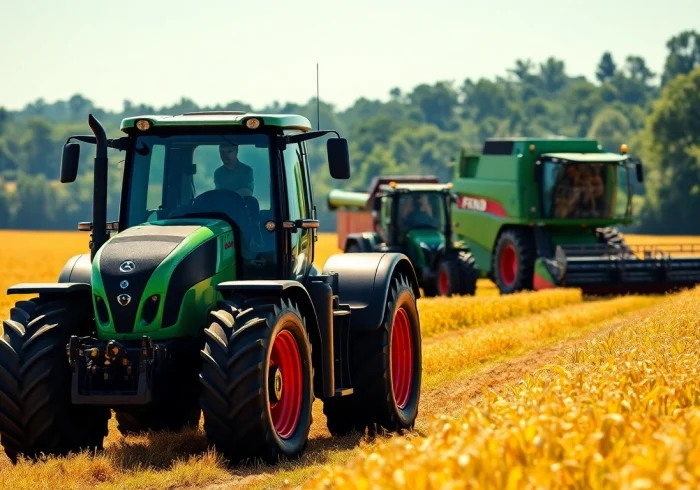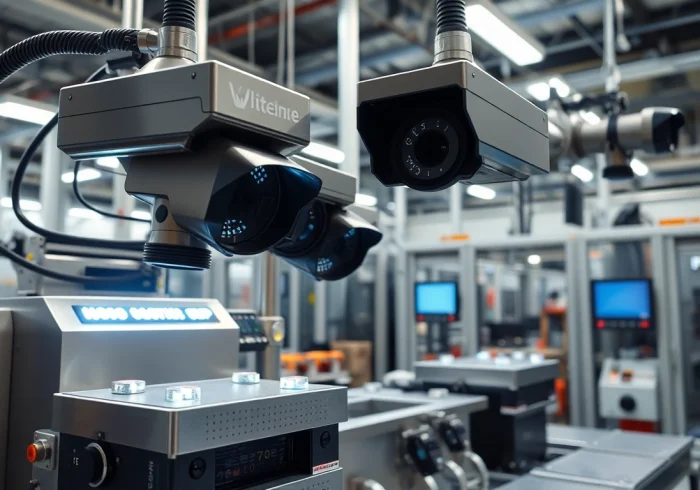Introduction to Filling Machines
Filling machines are essential devices used in various industries to efficiently dispense liquids, powders, or granulated substances into containers. These machines contribute significantly to the operational efficiency of manufacturing processes, ensuring precise filling, thus reducing waste and enhancing productivity. While filling machines can be found in various forms, they are instrumental in food and beverage, pharmaceutical, cosmetic, and chemical industries. Understanding the nuances of filling machines is crucial for businesses looking to optimize their production lines. Organizations interested in acquiring a Filling Machine should consider several factors to ensure they select the ideal equipment for their specific needs.
What is a Filling Machine?
A filling machine is an automated or semi-automated device designed to dispense a specific quantity of a product into containers consistently. These devices can handle a wide variety of substances, including liquids, gels, powders, and granules. Based on the application and requirements, filling machines can vary in complexity, speed, and technology, ranging from manual fillers operated by hand to fully automated systems capable of filling thousands of containers per hour.
Functions and Benefits of Filling Machines
Filling machines serve several critical functions across different industries:
- Efficiency: They enhance productivity by significantly speeding up the filling process compared to manual filling methods.
- Precision: Automated filling machines are programmed to dispense precise quantities of product, reducing waste and ensuring consistency.
- Labor Savings: With automation, the reliance on manual labor decreases, leading to increased cost savings and reduced risk of human error.
- Flexibility: Modern filling machines can handle a variety of products and container sizes, allowing for greater operational flexibility.
History and Development of Filling Machines
The evolution of filling machines dates back to the early 20th century when the first mechanical devices were created to assist in the manual filling processes. As manufacturing technology advanced, so did the complexity and automation of filling machines. The introduction of microprocessor technology in the 1980s and 1990s enabled significant improvements in accuracy and speed, paving the way for modern fully automated systems. Recent innovations include smart sensors and IoT integration for real-time monitoring and data analytics, further enhancing the efficiency of filling operations.
Types of Filling Machines
Filling machines can be classified based on the level of automation and the type of filling system employed. Here are the primary categories:
Manual Filling Machines
Manual filling machines require human intervention for operation. They are typically simple devices ideal for small-scale operations or artisan manufacturing environments. While they may not offer the speed and efficiency of automated machines, they are cost-effective and allow for greater control over the filling process. These machines are commonly used for niche products or in settings where production volume does not justify the investment in automation.
Semi-Automatic Filling Machines
Semi-automatic filling machines strike a balance between manual and fully automatic systems. They typically require an operator to load containers and start the filling process but automate the actual dispensing of the product. This type of filling machine is suitable for medium-scale production and offers flexibility and upgraded efficiency without the need for full automation. They are often employed in industries where products vary frequently and quick changeovers are necessary.
Fully Automatic Filling Machines
Fully automatic filling machines are designed for high-volume production tasks. They incorporate various technologies, including volumetric filling, gravimetric filling, and auger filling, depending on the product. These machines run continuously, requiring minimal human intervention, thereby maximizing efficiency and minimizing the risk of errors. Fully automated systems are prevalent in large-scale food and beverage operations, pharmaceuticals, and chemical manufacturing, where speed and precision are critical.
How Filling Machines Work
Filling machines operate through a series of steps aimed at ensuring accurate and efficient filling of containers. Understanding the underlying processes is vital for selecting the right machine for your needs.
Filling Process and Machine Configurations
The filling process generally involves:
- Container Preparation: Containers are automatically positioned and prepared for filling, ensuring they are clean and appropriately oriented.
- Filling Mechanism Activation: Depending on the machine type, the filling mechanism is activated, and the correct amount of product is dispensed into each container.
- Sealing and Capping: After filling, additional machinery may be integrated to seal or cap the containers, completing the process.
Measurement Methods in Filling Machines
Different measurement methods are employed in filling machines based on the product type:
- Volumetric Filling: This method measures the volume of liquid dispensed using sensors or mechanical devices to achieve precision.
- Gravimetric Filling: For products where weight is critical, gravimetric systems measure the actual weight of the product being filled, ensuring accuracy.
- Piston Filling: Widely used for thicker products, piston filling uses a piston to draw in the product and dispense it accurately into the container.
Advanced Technologies in Filling Machines
The latest advancements in filling machine technologies include:
- IoT Integration: Smart filling machines can connect to the internet for real-time data analysis, helping manufacturers optimize operations and monitor performance remotely.
- Automatic Cleaning Systems: Modern filling machines feature automated cleaning cycles, ensuring hygiene and reducing downtime caused by manual cleaning processes.
- Adjustable Systems: Innovative filling machines allow for easy adjustments to accommodate different bottle sizes or product types without extensive changeovers.
Applications of Filling Machines Across Various Industries
The versatility of filling machines makes them applicable in multiple sectors:
Food and Beverage Industry
Filling machines are extensively used in the food and beverage sector for packaging liquids (such as juices and sauces), powders (like soups and drink mixes), and solids (like snacks). Automation in this industry ensures compliance with food safety regulations and enhances production efficiency. Utilizing hygienic designs and materials compliant with food safety standards is essential for manufacturers in this field.
Cosmetic and Pharmaceutical Industry
In cosmetics and pharmaceuticals, filling machines are crucial for ensuring the precise and sanitary filling of products. From creams and lotions to syrups and tablets, these machines help maintain high standards of quality and safety. Specialized filling systems can accommodate unique product properties, such as viscosity and particle size, which is critical in these industries.
Chemical and Agricultural Industry
Filling machines in the chemical and agricultural sectors handle strong substances, including acids, fertilizers, and pesticides. These machines must endure harsh environments and often incorporate ergonomic features to protect operators. Moreover, suitable materials and designs are necessary to prevent contamination and ensure safe handling of dangerous materials.
Selecting the Right Filling Machine
When considering the purchase of a filling machine, several factors must be taken into account to ensure an optimal decision:
Factors to Consider
- Product Characteristics: The nature of the product, such as viscosity, particle size, and whether it requires special handling, will greatly influence the choice of filling machine.
- Production Volume: Understanding the desired output can help determine whether a manual, semi-automatic, or fully automatic machine is most appropriate.
- Budget Constraints: Costs can vary widely based on technology, capacity, and features, typically necessitating a careful budget evaluation.
Costing and Budgeting
Budgeting for a filling machine involves considering not just the purchase price but also installation, maintenance costs, and potential downtime expenses. It’s essential to conduct a cost-benefit analysis that evaluates the expected return on investment based on production increases and the associated savings over time.
Reviews and Recommendations for Filling Machines
Researching different models and manufacturers is crucial. Reading reviews and seeking recommendations from industry peers can provide valuable insights into machine performance and reliability. It’s advisable to select reputable manufacturers known for providing support, education, and spare parts after the purchase to ensure long-term operational success.
Conclusion
Filling machines play a pivotal role in enhancing the productivity and efficiency of production lines across many industries. By understanding the various types and functionalities of filling machines, along with their applications, companies can make informed decisions that align with their operational goals. Given the ongoing advancements in technology, staying abreast of these innovations ensures that organizations continue optimizing their production processes to meet market demands effectively.



